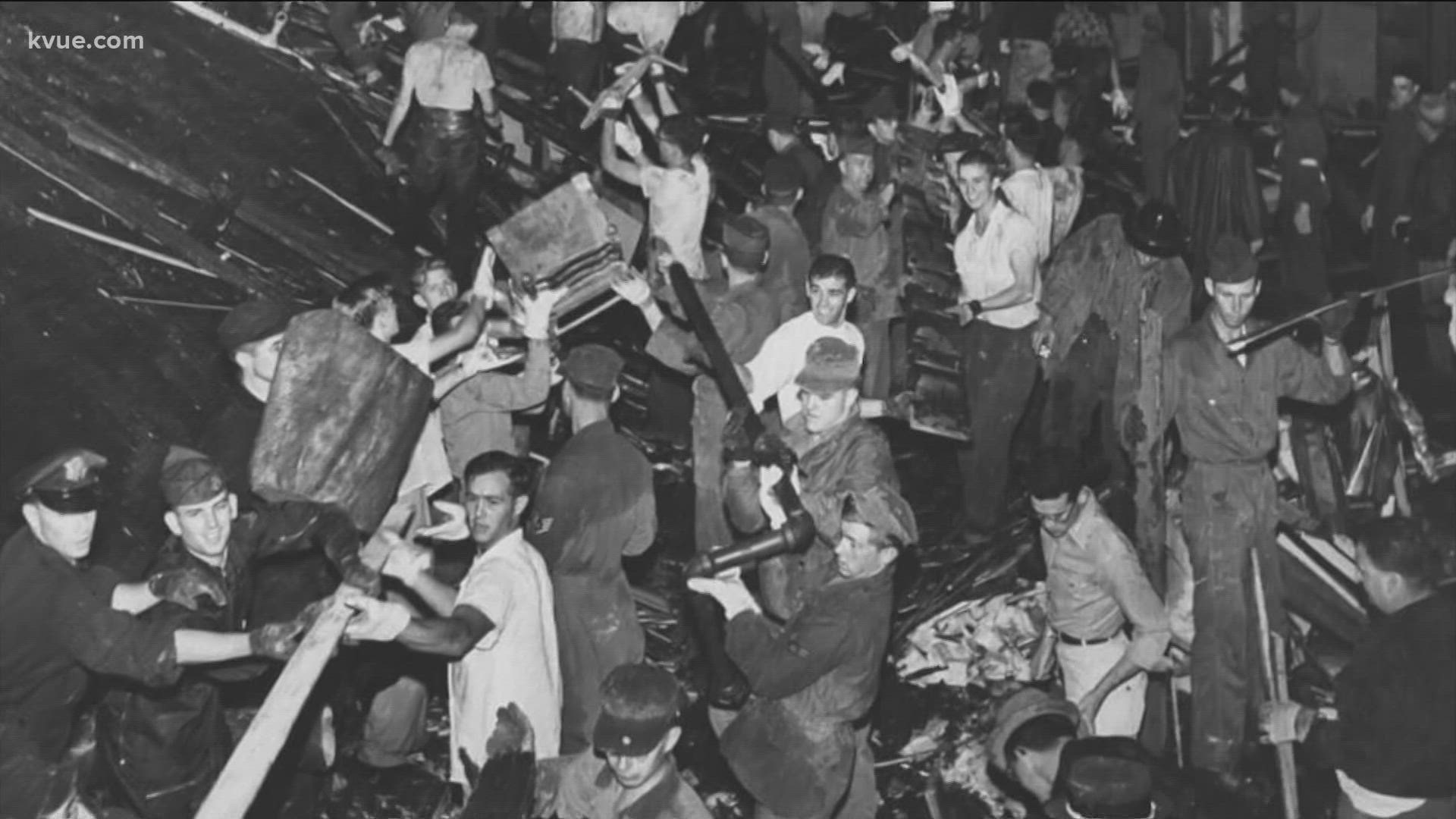WACO, Texas — For a long time, they said a tornado couldn’t happen in Waco. A popular Native American folk legend held that Waco was naturally protected from tornadoes because it sat in a geologically depressed area with safety provided by the bluffs of the Brazos River.
But on May 11, 1953, the legend was put to a test. And it failed.
A catastrophic tornado – one of 33 that struck from Minnesota to Texas during a particularly hot and humid few days in May – devastated the city.
The tornado, with winds of up to 260 mph, struck the heart of downtown toward the end of a busy weekday. Buildings crumbled, trapping people who had sought shelter from the blinding rain and baseball-sized hail.
The tornado injured 600 people, took 114 lives and damaged hundreds of businesses. Some victims were trapped in the rubble for days.
Many of the deaths occurred at the R.T. Dennis Furniture Store. It had been a popular department store for decades and was crowded with shoppers when the storm hit. Because the building had been constructed without steel re-enforcement, it simply collapsed on itself. Many of the people who died were store employees.
But from the destruction, there was a significant development in the way we forecast severe weather today. The tornados of 1953 led to the development of a system of weather radars across America and a better way to give us earlier warnings of approaching storms.
PEOPLE ARE ALSO READING:

